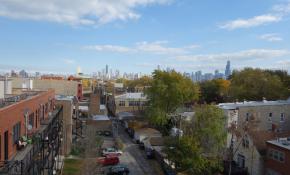No algorithm of reporting is more enduring and productive than the Fives W’s: Who, What, Where, When and Why. None of those is harder to answer than the Why.
Think about what you have learned over the last week about the mass killings in Las Vegas.
The Who: We know the identity of the killer and many details of his life. We know about the dead and injured, the first responders, musicians on the stage, the investigators, the spontaneous helpers and heroes. We know of his girlfriend in the Philippines. Her sisters and his brother. The president of the United States. The head of the NRA. With so many Who’s available, the job of the journalist is to choose the ones most interesting, most important, or most relevant to a particular angle of the story.
The What: We know about the shooter’s actions and their effects. We know about the fear and chaos they caused. How the shootings moved people to escape or to rescue others. We know what happened when a security guard – followed by a SWAT team – made their way to the 32nd floor.
The Where: We know Las Vegas. The Strip. Mandalay Bay. The country music concert venue. The parking lot where they found his car. The random places where people took cover. The insides of ambulances. The packed hospitals engaged in triage of the victims.
The When: We know when the shooter checked into the hotel. When he started shooting. How long he was firing into the crowd. When they figured out what room he was in. When he shot himself. By now we have several timelines that attempt to measure the chronologies of his preparations, actions and responses to them.
The Why: We do not know the answer, and, what is difficult to accept, we may never know in a way that all stakeholders and the public feel they need to know.
No wonder the great scholar of democracy and culture, James Carey, once referred to The Why as the dark, unexplored continent of American journalism:
Why answers to the question of explanation. It accounts for events, actions, and actors. It is a search for the deeper underlying factors which lie behind the surfaces of the news story. “A story is worthless if it doesn’t tell me why something happened,” says Allan M. Siegal, news editor of the New York Times. Well, Mr. Siegal goes too far. If we threw out all the stories in the Times that failed to answer the question “why,” there wouldn’t be much newspaper left beyond the advertisements. Nonetheless, the why element attempts to make things sensible, coherent, explicable. It satisfies our desire to believe that the world, at least most of the time, is driven by something other than blind chance.
Here is the way the Why impulse – the desire to understand — is communicated in a news story, first in a lead from the Washington Post:
LAS VEGAS — Law enforcement officials on Tuesday continued looking for a motive in one of the deadliest mass shootings in the United States, scouring the gunman’s personal and financial history for signals that could help determine what set him off in Las Vegas.
Then by a lead in the New York Times:
LAS VEGAS — Investigators struggled Tuesday with a chilling but baffling array of clues in the wake of the deadliest mass shooting in modern American history as they sought to determine the chain of events that caused a 64-year-old to gun down concertgoers from his hotel suite overlooking the Las Vegas Strip.
“I can’t get into the mind of a psychopath,” said Joseph Lombardo, the sheriff of the Las Vegas Metropolitan Police Department, on Monday.
Watching one press briefing, I stopped counting how many time experts counseled patience in what they predicted would be a long slog toward the Why.
In 2002 I wrote another essay about a story in which folks were eager to understand the Why. It was not that long after the destruction of the Twin Towers on 9/11 that a 15-year-old Florida boy named Charles Bishop stole a small plane and flew it into a Tampa skyscraper.
It was just good fortune that no one else was killed in the incident except for the young pilot.
One overriding question gripped the community: Why did he do it? Early explanations offered two bizarre answers. There were reports that he may have expressed sympathy for Osama bin Laden. Or, he may have been suffering from the side effects from his acne medicine. As I wrote back then, the answers ranged from A to Z: solidarity with al-Qaida or zits.
The public’s relentless thirst for answers unleashed the Journalism of Why. In many cases, a first set of answers arrives in the form of unproven assertions, irresponsible speculation, and the logical fallacy of the single cause: “Video games made him do it.” Surrounded as we are by so much entertainment programming that includes FBI profilers, it feels as if we all have been deputized as amateur sleuths.
To answer the question, a team of reporters and researchers from the local newspaper (then the St. Petersburg Times, now the Tampa Bay Times) set out to solve the mystery. What they came up with was what I would describe as a diagnostic scoop. Among other things they discovered, they learned that Charles Bishop was the child of two teenagers who had twice attempted suicide.
As I wrote back then about the evidence in the story:
This is never presented as a genetic or emotional "answer" to the kid's suicidal predisposition. Nor is the fact that the missing father was of Middle Eastern-American descent. Nor that the son's name was changed from Bishara to Bishop, suggesting a crisis of identity. Nor that mother and son lived a rootless, nomadic lifestyle, moving from town to town and school to school. Nor that the acne medicine increased his depression. Nor that Columbine or Sept. 11 created models of death for him to copy.
It turns out that a 15-year-old life is a narrative with a beginning, a middle, and an end. In this strange case, it has a prologue, a legacy of suicide and domestic violence. It has an epilogue, now being written. Powerful streams of influence converge to form the character of a troubled youth suffering with us all through troubled times.
I found the design and illustration of this story brilliant in its conception and execution. Above the headline and lead is a newspaper clipping from July 31, 1984, which tells the story of the parents' suicide attempts. The effect is almost Shakespearean, a play within a play, a hall of mirrors in which reality is tragically distorted but finally clarified.
The shootings at Columbine High School offer a cautionary tale. People still wonder why two teens from affluent families would conspire to destroy their school and everyone in it. I have a narrative answer in mind: Two eccentric teens, members of the Trenchcoat Mafia, bullied mercilessly by fellow students, especially the jocks, set out on a mission of revenge.
Dave Cullen covered the story from its first day, but it took researching the evidence for a book, written years later, to understand how much of the early theories about Columbine were just plain wrong. The truth turns out to be more disturbing: that one of the killers was a young sociopath who found in his depressed and suicidal partner a convenient and congenial co-conspirator.
Near the end of his book “Columbine,” 10 years after the shootings, Cullen writes:
Many of the victims are consumed with the why question, but Val has had enough of that. “I don’t wonder anymore. The more you keep second-guessing and asking questions, the more it hinders your progress. If I let Columbine ruin my life, then they’ve succeeded. If you’re going to be bitter and angry and continue to hurt then you’re dead inside. If I shut down, if I let my emotions overcome me, then I’m dead.”
Val also takes comfort in the suicides. “I’m glad they killed themselves. That was the best thing that could have happened for me.” [She says she is relieved not to have been dragged through years of criminal investigations and trials to get to some understanding of motive.] “I didn’t need to know why. I knew it was random. I took peace in that.” She understands why many people need to know why so badly…. “To be happy and successful is the biggest F-you to them…. they wanted me dead. I’m alive. You’re dead. I get to be happy.”
That the Las Vegas shooter was a “sociopath” (and, by the way, the son of an infamous bank robber once described by the FBI as a pyschopath) will be an answer that many stakeholders will find unsatisfying, but it may be where we are headed.
Most of the crime narratives we experience are ones in which the motivation of the killer becomes clear. But there is another kind of story – expressed as a higher art form – because it adheres more to the ambiguities of real life. None other than William Shakespeare puts it into practice in the tragedy of Othello.
Harvard scholar Stephen Greenblatt describes it as “the opacity of motive.” The theory is that the less we know about someone’s motive (such as Iago’s), or the greater the complexity of the motive (such as Hamlet’s) the greater the work of art.
In Othello, for example, we know that Shakespeare drew upon an earlier version of the story in which the motives of Iago were clear. In the source, Iago plays his vengeful trick upon Othello, resulting in the murder of Desdemona out of anger and jealousy. He is in love with Desdemona himself, but she doesn’t see it. Shakespeare’s version removes that motive and replaces it with – nothing. Remember Iago’s chilling final words: “Demand me nothing. What you know, you know. From this time forth I never will speak word.”
If Iago won’t help journalists understand the power of the Why, maybe journalism scholar James Carey will:
How and why are the most problematic aspects of American journalism: the dark continent and invisible landscape. Why and how are what we most want to get out of the news story and are least likely to receive or what we must in most cases supply ourselves. Both largely elude and must elude the conventions of daily journalism, as they elude, incidentally, art and science. Our interest in ‘what’s new,’ ‘what’s happening,’ is not merely cognitive and aesthetic. We want more than facts pleasingly arranged. We also want to know how to feel about events and what, if anything, to do about them. If they occur by luck or blind chance, that is a kind of explanation, too. It tells us to be tragically resigned to them; indeed, luck and chance are the unannounced dummy variables of journalistic thought, as they are of common senses. We need not only to know but to understand, not only to grasp but to take an attitude toward the events and personalities that pass before us. But to have an understanding or an attitude depends upon depth in the news story. Why and how attempt to supply this depth, even if honored every day largely in the breach.









